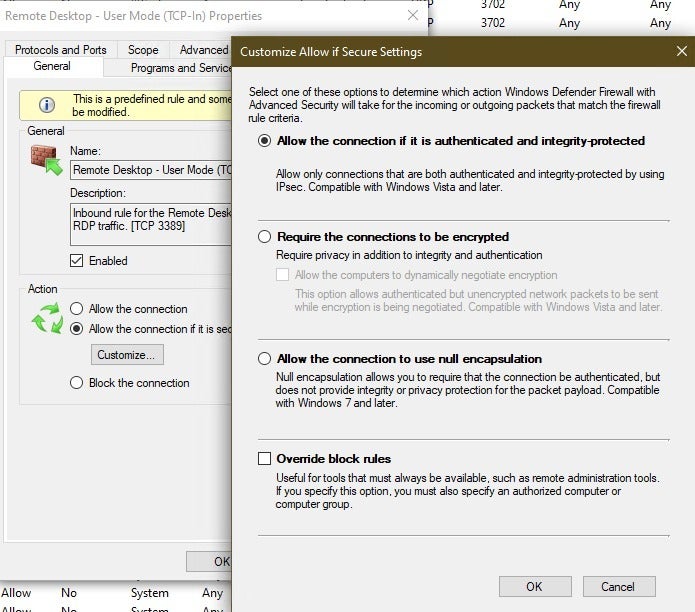

However, hackers can easily bypass CAPTCHA by using headless browsers. If so, it can be combined with other techniques, for example, MFA can be applied only in combination with device fingerprinting.ĬAPTCHA, which requires users to perform an action to prove they are human, can reduce the effectiveness of credential stuffing. In many cases, it is not feasible to require multi-factor authentication for an entire user base. Attacker bots will not be able to provide a physical authentication method, such as a mobile phone or access token. Requiring users to authenticate with something they have, in addition to something they know, is the best defense against credential stuffing. The following measures can help you protect your website from credential stuffing attacks.
#Secure windows firewall parallels access password
The reason is that even if you enforce strong passwords, users may share that password across services, leading to a compromise.Ĭredential stuffing attack example Credential Stuffing Prevention In a modern web application with basic security measures in place, brute force attacks are likely to fail, while credential stuffing attacks can succeed. Brute force attacks lack context and data from previous breaches, and so their login success rate is much lower.Brute force attacks succeed if users choose simple, guessable passwords.

Brute force attacks try to guess credentials with no context, using random strings, commonly used password patterns or dictionaries of common phrases.Brute Force AttacksĬredential stuffing is similar to a brute force attack, but there are several important differences: These bots can often circumvent simple security measures like banning IP addresses with too many failed logins.Ĭredential Stuffing vs. More sophisticated bots that simultaneously attempt several logins, and appear to originate from different IP addresses.Broad availability of massive databases of breach credentials, for example, “Collection #1-5” which made 22 billion username and password combinations openly available in plaintext to the hacker community.Statistics show that about 0.1% of breached credentials attempted on another service will result in a successful login.Ĭredential stuffing is a rising threat vector for two main reasons: The attack uses bots for automation and scale and is based on the assumption that many users reuse usernames and passwords across multiple services. Credential stuffing is a cyberattack method in which attackers use lists of compromised user credentials to breach into a system.


 0 kommentar(er)
0 kommentar(er)
